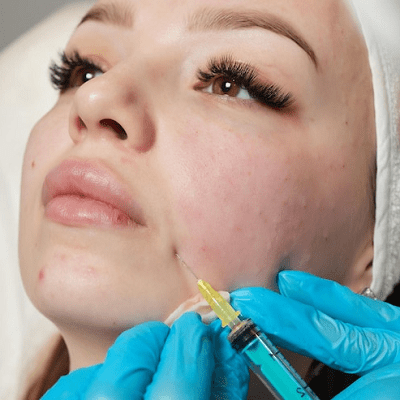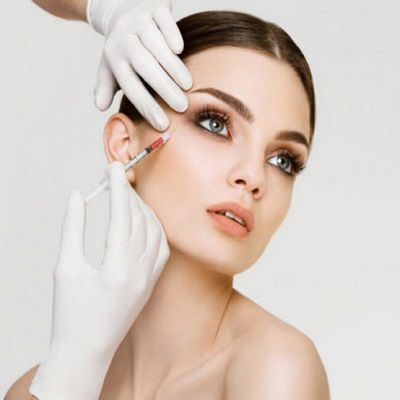
Injectable wrinkles fillers can provide you with a more youthful appearance for a fraction of the expense of a typical facelift. Most will fill hollows, creases, and wrinkles in less than thirty minutes, with effects lasting four months to over a year.
Injectable cosmetic fillers in Dubai have been available for many years. Medical advancements in recent times have resulted in new variants of this wrinkle treatment. More unique cosmetic fillers are more durable, even semi-permanent. However, before seeing a cosmetic surgeon or any health care expert, be sure you have done your research.
Where Do Wrinkles Come From?
Three key components keep skin taut and smooth: collagen, hyaluronic acid, and elastin. These substances work together to form a robust and spongy meshwork under the top layer of skin. This flexible structure helps to maintain the skin’s surface smooth and tight.
This meshwork gradually loses strength as it ages. With fundamental support structure weakening, the skin’s surface loses its baby-skin smoothness.
Injecting cosmetic fillers into the thinned-out meshwork helps to fill it in. Fillers puff up the tissue beneath the skin, causing creases to disappear. The skin gets firmer, smoother, and appears younger.
What Purpose Do Wrinkle Fillers Serve?
Unlike Botox injections, which relax the muscle behind a wrinkle, injectable wrinkle fillers replace the line or region with one of many different chemicals. As a result, difficulty locations are practically eliminated.
Wrinkle fillers could also be utilized as “volumizers,” plumping and elevating the cheeks, chins, jawlines, and temples, as well as filling up thin lips and plumping drooping hands.
The procedure is quick and straightforward. However, all wrinkle fillers have drawbacks, including the possibility of an allergic response and the creation of small lumps beneath the skin. Those bumps may be permanent in certain circumstances. And occasionally, a bluish skin discoloration known as the Tyndall effect occurs. Although the color shift might linger for months, there are therapies available. Skin cells may perish in infrequent circumstances if wrinkle fillers are not utilized appropriately. A few cases of blindness, scarring from skin loss, and nerve paralysis have also been described. The wrinkle fillers that last longer are the ones that induce adverse effects.
Not all wrinkle fillers are suitable for all types of wrinkles. The appropriate one, when used correctly, poses the fewest hazards and produces the best benefits. As a result, you should only have fillers injected by a board-certified dermatologist or cosmetic surgeon who receives continuous, specialized training.
Here is a list of wrinkle fillers that are currently available. It covers the essential components, function, benefits and drawbacks, and the optimum regions for therapy. Your surgeon will guide you about the best one for you.
Wrinkle Fillers With Hyaluronic Acid:
Hyaluronic acid for face is the most often used wrinkle filler. Each kind operates in a somewhat different manner, with diverse effects.
Although side effects are uncommon, they might include redness, edema, and bruising at the injection site. The filler may also appear as small lumps under the skin. This is an issue that frequently improves with time.
The duration of the outcomes ranges from 6 months to a year. According to some studies, frequent injections may help increase the body’s natural collagen synthesis. This will assist in reducing the lines and wrinkles. There is also an indication that less filler is required to produce the same appearance over time.
Wrinkle Fillers Synthetic:
This is a more limited group of wrinkle fillers that contains lab-created compounds that have nothing to do with anything occurring naturally in the skin.
All dermal fillers injections in Dubai in this category have comparable adverse effects, such as redness, edema, or bruising at the injection site. Other uncommon adverse effects include nodules or pimples under the skin that may be seen and felt and, in rare cases, may need surgery to remove.
One of the advantages is that the impact lasts longer. Furthermore, at least one filler provides semi-permanent filling of lines and wrinkles. Remember that products that have a longer duration of action are more likely to induce adverse effects. Synthetic wrinkle fillers can also cause deformity if not handled appropriately.
Wrinkle Fillers Made From Collagen:
The earliest wrinkle fillers were created by scientists using a refined type of collagen-derived primarily from cows. Although it performed effectively and provided a natural-looking fill, the results were short-lived. The majority of collagen injections began to degrade as soon as one month following therapy. Because these wrinkle fillers were derived from animals, they had a greater likelihood of adverse response and needed sensitivity testing ahead of time.
New methods of manufacturing collagen have helped to reduce the hazards. Furthermore, new synthetic collagens make these injections safer and more beneficial to a broader spectrum of patients. Although the results might not last as long as conventional wrinkle fillers, many think they seem more natural. Because the body naturally breaks down injected collagen, you must get collagen injections two to four times a year to maintain effects.
Adverse effects of collagen injections include bruising and redness at the injection site, as well as a possibility of allergic response (particularly for those still utilizing cow sources).
Autologous Wrinkle Fillers:
The most widely utilized substance in this category is fat. Your fat is surgically extracted, processed, and injected from your thighs, buttocks, or stomach. You will require two procedures (one to remove the fat and one to inject it). Both treatments can be completed in a single visit. The fat stretches the skin, causing wrinkles to disappear. There is no allergic response because it comes from your own body. Additional fat purification processes in the lab might be expensive and time-consuming. The results can be semi-permanent. Yet, a series of injections may be required over time.
The risks are comparable to those seen with conventional wrinkle fillers, including bruises, redness, and swelling at the injection site. These injections do not need FDA permission because the fillers are derived from your body.
Final Words!
Some people take hyaluronic acid for oily skin supplements to address osteoarthritis and wrinkles on their skin. While doctors use injectable hyaluronic acid to relieve arthritis pain in the short term, the benefits of oral preparations are less well understood. However, several fair trials have had encouraging outcomes.
If you’re considering using hyaluronic acid supplements, you might be wondering if they’re safe and beneficial for your condition. Keep in mind that the chemical is occasionally derived from roosters, so if you are allergic to poultry, eggs, or protein, this may not be the ideal option for you. Please read the labels of the supplements you’re thinking about buying carefully to ensure they don’t contain any allergies.


































